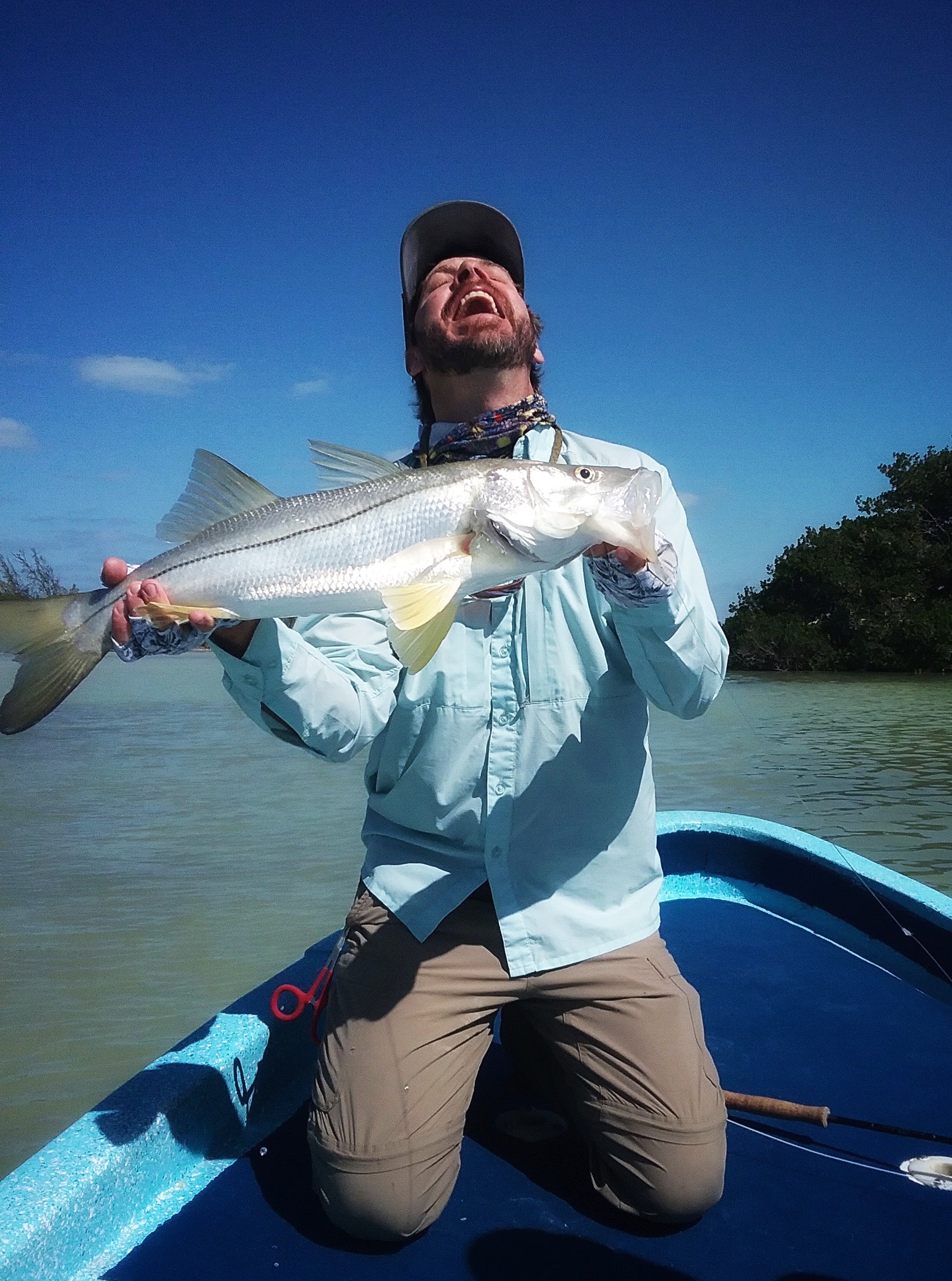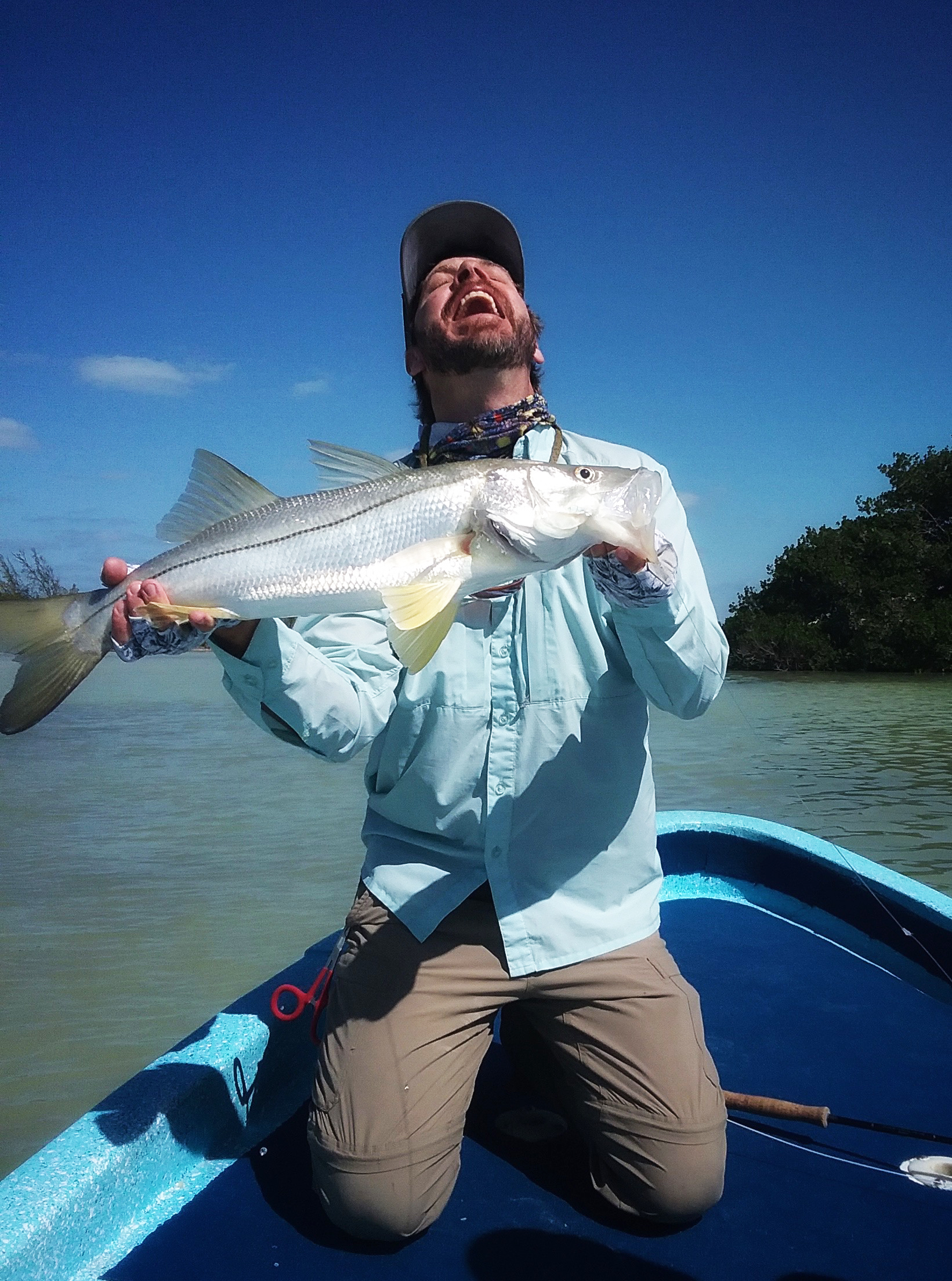
4 Keys to Becoming a Deadly Flats Fisher

For those of you who have had the pleasure of fishing the salt flats, you know that it can be intoxicating! As I write these words from the deck of La Pescadora Fishing Lodge on Mexico’s Yucatan peninsula, I am being called by the ocean swells breaking 50 yards away and can’t wait for tomorrow morning and another day of fishing! As you travel the expanse of the bays, walk the warm sandy flats, or pole between the mangroves you never know what type of fish you are going to encounter next. It might be schools of Bonefish chasing shrimp over the sand, Tarpon and Snook waiting in ambush among the roots of the mangroves, or Permit tailing above the waves. Each sighting elicits a flurry of action with guides switching rods and poling you into position in order to give you a shot.
After more than 30 years pursuing trout on the fly, the ocean with its seemingly infinite number of species and unique challenges has awakened something new within me! Like being introduced to Latin food for the first time after a lifetime of eating hotdogs and hamburgers, I didn’t know fly fishing could be like this and now I can’t get enough. Whether your chance to wet a fly in the salt is close at hand or is on your “fly fishing bucket list”, let these four principles be the mantra that guides you to tight lines, action-packed days and fish in the boat.
Be Ready to Shoot Your Shot
Travel with me for a moment away from the salt flats and into the high elevation timber of the Rocky Mountains on a bow hunt for elk. Bowhunting, like fly fishing on the salt flats, is an endurance game and requires watchfulness, accuracy, and skill. In the timber, your quarry might appear at any quarter with solo animals ghosting through trees at 60 feet giving you a small window for a shot, or a herd of animals standing broadside together out in a meadow. Another factor that affects both the bow hunter and fly fisher is the wind. Whether it is a gracious wind helping you cast from behind or a constant 20 mile an hour crosswind that will fight to push back your casts or sail them off target, you need to be ready to shoot your shot, and the only way to do that is to practice! Learn to double haul and to push your flies into and across the wind to targets from 20 to 65 feet. Watch YouTube videos in order to learn from the experts as they layout 60 feet of line with just 2 false casts. Focus on precision at different distances and with the wind at every quarter, so when you are presented with a shot at a fish, you’ll be ready to bag that quarry whatever the conditions.
Learn to Cast Large Rods
Leave your euro nymphing rods at home and don’t bother packing a 6 weight, because 7 to 11 weight rods are the order of the day on the flats. For bonefish, plan on using a 7 or 8 weight rod; for snook and small tarpon a 9 weight is best; and for large tarpon, permit, barracuda, and shark you’ll want to have a 10 or 11 weight on hand. These stiff-backed rods are great for punching your flies through the wind and fighting big fish but are also a workout, so practice regularly prior to your trip if you want to have a successful time on the water.
Find a Good Guide
Be it gold, tequila, or whatever your currency, a good saltwater guide with a lifetime of experience on your target water is worth their weight! With the intricacies of wind, tide, season, and temperature pushing fish over flats and lagoons that can cover more than 50 square miles, a good guide will know where to take you and how to set you up for the best shot at your target species. Unbeknownst to me, La Pescadora Fishing Lodge just happens to be run by one of the most awarded and renowned Permit guides in the world. With a lineage of anglers reaching back to the Mayans, his knowledge of the water and ability to spot fish that no mere mortal should be able to see gave us multiple shots and numerous species each day.
Be Patient
While 90% of trout can typically be found in about 10% of a river, 99% of fish on the flats are going to be found in less than 1% of the water. With that said, you need to be patient. You typically aren’t going to have a 30 fish day on the flats, but the guides will find you fish, and those that you do have the pleasure of hooking into will leave your fingers burning and your dreams haunted!




